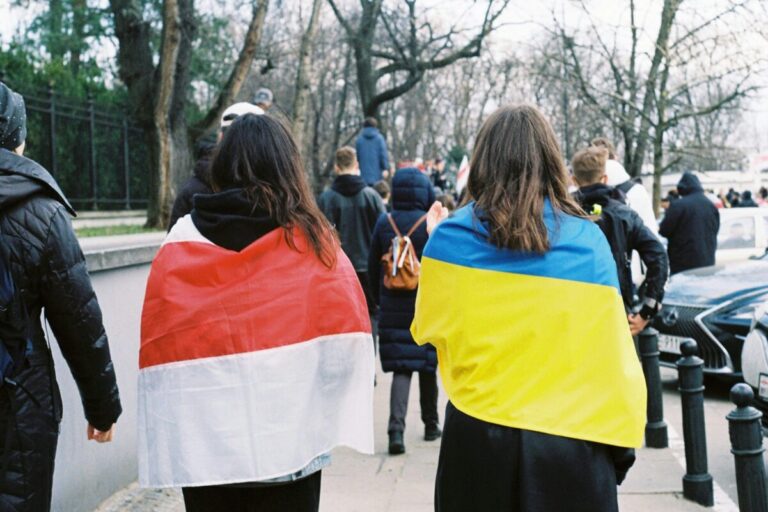
Uman Pilgrimage Ban 2025: Why Ukraine Blocked Hasidic Visits for Rosh Hashanah and What It Means
Ukraine has officially banned the annual pilgrimage of Breslov Hasidim to Uman for Rosh Hashanah in 2025. The decision was made amid serious security threats linked to the ongoing war with Russia, as well as the nationwide ban on mass gatherings, which has been in effect since February 2022. The ban applies to visits to the grave of Rabbi Nachman of Breslov, one of the most significant Jewish religious sites in Eastern Europe.
What appears to be a purely security-driven measure also carries political and diplomatic dimensions, exposing a complex web of tensions between Ukraine, Israel, and Moldova.
According to Ukrainian officials, this year’s pilgrimage to Uman is not possible due to the high risks to the lives and safety of thousands of pilgrims. Drone attacks, large-scale missile strikes, and persistent threats to civilian infrastructure were cited as the main reasons for prohibiting large gatherings in central Ukraine, where the pilgrimage site is located.
A Ukrainian official, speaking anonymously, clarified:
“This year we cannot guarantee the safety of mass events. In light of intensified attacks on central and western Ukraine, the state bears responsibility for thousands of lives. We’ve made the decision the pilgrimage will not take place.”
In previous years, the Ukrainian government only advised pilgrims not to come to Uman, but tens of thousands still arrived, often entering via neighboring Moldova. In 2024, despite the same warnings, more than 30,000 Hasidic Jewstraveled to Uman for Rosh Hashanah, which fell on October 2-4.
Religious tradition and its meaning
Rosh Hashanah is one of the most important holidays in Judaism, the Jewish New Year, celebrated on the 1st and 2nd of Tishrei in the Hebrew calendar. The date shifts each year and typically falls between mid-September and early October.
The central pilgrimage site is the grave of Tzadik Nachman of Breslov, a spiritual leader and founder of one of the most influential Hasidic movements. Rabbi Nachman (1772–1810), grandson of Baal Shem Tov the founder of Hasidism requested to be buried in Uman near Jewish victims of the 1768 Koliyivshchyna uprising.
The site is located at Hryhoriya Kosynky Street 1, in the city of Uman, Cherkasy region. As of July 2025, the grave has been officially designated a site of national importance, upgraded from its previous status as a local historical landmark.
Each year, thousands of Hasidic Jews from Israel, the United States, France, the UK, and other countries make the journey to Uman, especially during Rosh Hashanah. According to tradition, visiting the grave on this specific holiday is considered especially spiritually significant.
Diplomatic pressure: Why Ukraine is insisting
This year, the issue became diplomatic as well as logistical. Ukrainian authorities expressed frustration over Israel’s limited involvement in protecting its citizens. A government representative stated that Kyiv expects Israel to finance security measures, including police deployment in Uman, should the pilgrimage proceed.
The issue is not just about money. It’s also about international responsibility. Ukraine has repeatedly emphasized that if it allows the pilgrimage, Israel must take an active role in guaranteeing safety, not just rhetorically but in practice.
Moldova’s position: No corridor without payment
Moldova, which in recent years has served as a critical transit point for Hasidic pilgrims, also took a firm stance. This year, Chișinău issued clear conditions: Israel must fund a temporary terminal, provide for a secure route and charter flights, and supply necessary equipment. The total cost is estimated at around 8 million shekels.
Effectively, Moldova made it clear that without financial guarantees from Israel, the transit route will remain closed. As a neutral country indirectly affected by the war’s humanitarian impact, Moldova sees this as an issue of control and limited resources.
Israel denies the ban
After the ban was reported in Ukrainian media, Israel’s Foreign Ministry denied receiving any official notice. Officials stated that the policy on pilgrimages “has not changed”.
This creates a disconnect in official communication: Ukraine cites national restrictions and active threats, while Israel maintains its readiness to proceed at least publicly. In practice, this could result in border confusion and mismanagement on the ground.
What we know for sure
- The pilgrimage ban in 2025 has been confirmed by Ukrainian officials.
- The reason is the threat of mass casualties in case of an attack or terror event.
- Ukraine expects Israel to share responsibility.
- Moldova has issued financial demands for opening the transit corridor.
- Israel has not officially acknowledged any ban.
- Rosh Hashanah this year falls in October, though exact dates depend on the Hebrew calendar.
- The Uman pilgrimage site has now been formally listed as a national heritage monument.
Pilgrimage as a mirror of geopolitics
The story of Rosh Hashanah 2025 is not just about religion. It is a symptom of broader processes war, diplomacy, security, state responsibility, and international trust.
Ukraine, under constant threat, cannot afford to ignore the reality. And although the pilgrimage to Rabbi Nachman’s grave holds deep spiritual meaning for thousands, in 2025, preserving life outweighs tradition.
Until the parties agree on security, funding, and coordination, this year’s journey to Uman will remain impossible not because of politics, but out of basic human necessity.














